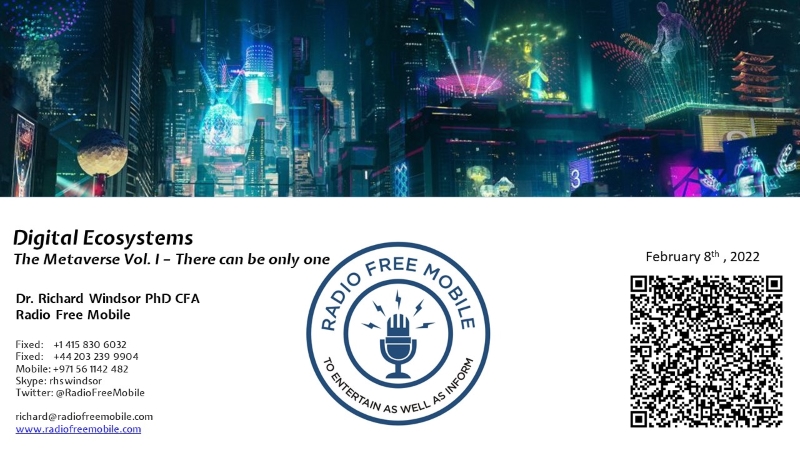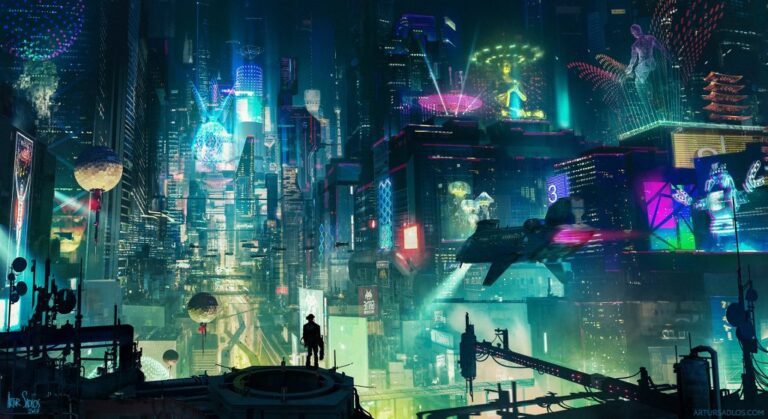8th February 2022 – RFM extends its coverage of the digital ecosystem to include the Metaverse with the publication of Digital Ecosystems – The Metaverse Vol. I – There can be only one.
RFM research subscribers will receive their copy by e-mail.
The Metaverse is already here but in a very basic form. This is because all of the requirements for the Metaverse have already been met by the Internet that is in use today. However, a lot of development is required to turn a 2D network into an immersive 3D virtual world which is why RFM thinks that it is going to be a long time before the Metaverse reaches the mass market. Unless all of the players ensure that their solutions work seamlessly together, there will be no Metaverse but a series of fragmented niche offerings where users go to play games or work remotely and little more.
- The 7 pillars of the Metaverse. RFM has identified 7 requirements for the Metaverse as a 3D immersive to become the preferred place for users to live their Digital Lives. These are grouped into 3 categories: hardware and engineering, business and strategy and content and services.
- Internet 3.0. These 7 pillars or requirements have already been satisfied meaning that the Metaverse in a very basic form is already here. This is Internet 2.0. The Metaverse is 3.0.
- There can be only one It is the ubiquity of Internet 2.0 that has made it so successful as every device can connect and interact with all of the others. Hence to become the digital destination of choice, there can be only one version of the Metaverse aka Internet 3.0.
- Long countdown. RFM concludes that the Metaverse will take 10 years or more to fulfil its potential. Smartphones first appeared in 2001 but it took 10 years or more for them to become the main device where users live their Digital Lives.
- Hardware is an obvious factor in limiting the appeal and take-off of the Metaverse and while there are still large shortcomings in the devices these are merely engineering problems. This means that with enough money and effort, they will eventually be solved. RFM expects this to occur sometime around 2025.
- Surfeit of silos. Everyone is busy building their own version of the Metaverse none of which interoperate with anyone else. Hence, a large number of isolated silos are currently under construction and unless they can all be folded into one, there will be no Metaverse outside of a few niche use cases. RFM sees this as by far the biggest and most difficult problem to solve.
- Blockchain Blockade. Other than expectations, there is no technical or business reason why blockchain has to be used to run the economy of the Metaverse. today, traditional systems like WeChat Pay or AliPay are in a much better position. The blockchain needs to become cheap, fast and flexible if it is to run the economy of the Metaverse.
- Volume II. This research has assessed the Metaverse, its promises and looked closely at what will be required for it to become the main environment for Digital Life. Volume II will assess the players and provide an outlook for winners and losers and why.









Google and Intel – Two Sto ...
25 April 2025